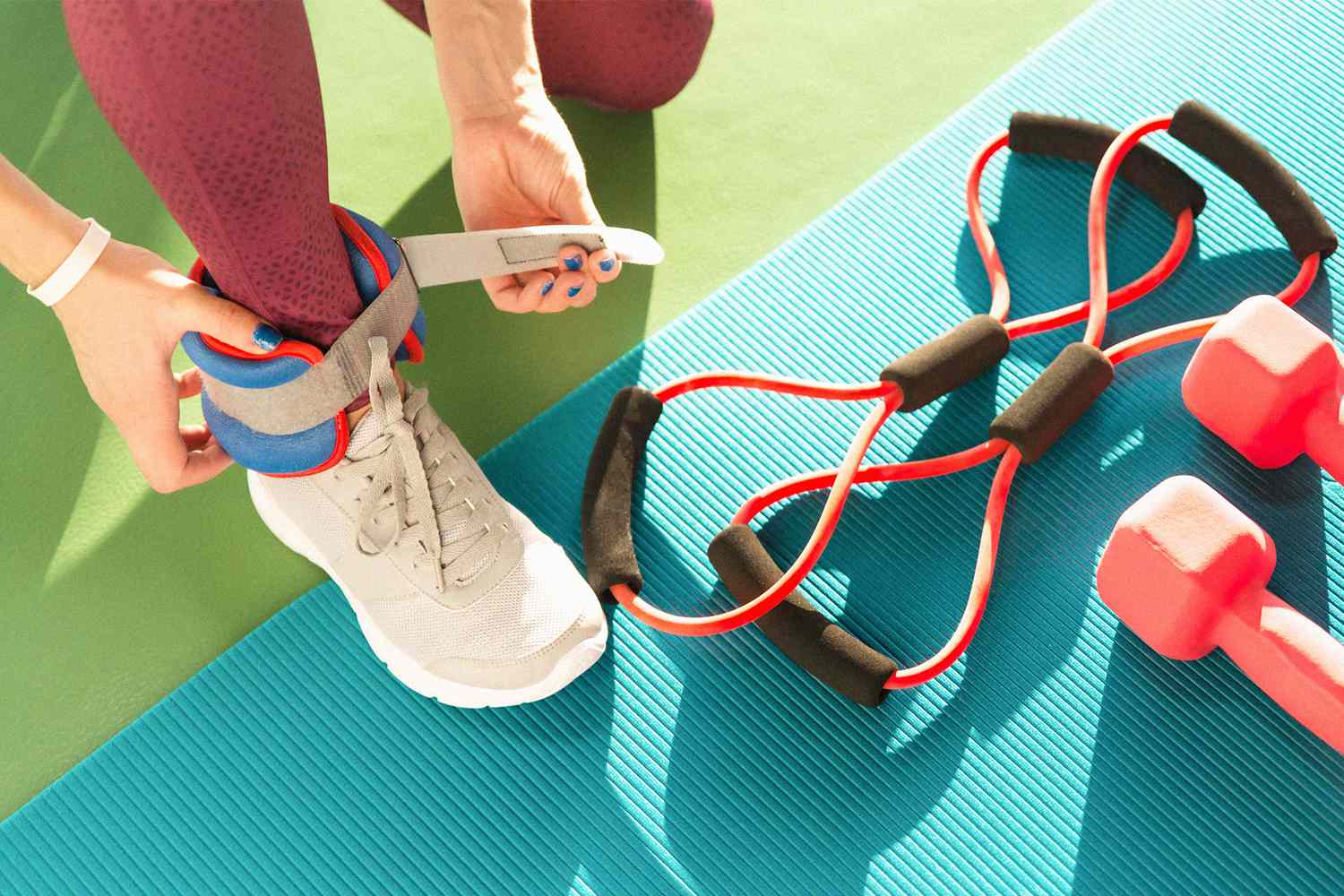Maximizing the Advantages of Ankle Weights: A Comprehensive Guide

Ankle weights, once seen as an obsolete fitness trend from the '80s, have shown staying power in contemporary workouts. These modern versions of the weights can be seen in various workout routines, from casual walks to low-impact barre sessions.
This text will explore the best ways to use ankle weights and discuss their various benefits. Trainers and experts in the field will provide insight into the advantages and proper use of ankle weights for exercise routines.
The primary benefit of ankle weights is the added resistance they provide during workouts. According to Lauren Leavell, a NASM-certified personal trainer and corrective exercise specialist, ankle weights add resistance to your training by introducing additional weight, resulting in stronger muscles being worked in new ways.
Regardless of fitness level, ankle weights can boost one's overall stamina and strength, as Emilie Goldblum, an intuitive stretch movement body coach and former Olympic rhythmic gymnast, explains. She suggests that anyone looking to enhance their fitness routine can benefit from ankle weights, even as part of daily activities such as walking or grocery shopping.
They are not only beneficial for resistance training, there are many other perks of exercising with ankle weights.
Exercise enthusiast and author Holly Perkins emphasizes the versatility of ankle weights; they are convenient to carry anywhere, and can be employed as foot or hand weights in the absence of a gym. However, she warns against using ankle weights as wrist weights as they may require constant adjustment.
Furthermore, ankle weights are adaptable to various levels of exercise, asserts Leavell. They can be adjusted to suit all types of workouts, from sitting to standing.
Ankle weights can be beneficial for reactivating muscles weakened by inactivity or sedentary lifestyles. They're also useful in physical therapy settings for patients dealing with lower-body conditions such as weak hamstrings or knee problems.
Leavell also notes that using ankle weights can increase overall mindfulness during workouts, as the weights draw attention to your form and movement.
Utilizing ankle weights in strength training can also enhance bone density, a crucial factor in preventing osteoporosis. Goldblum stresses the importance of light weight-bearing exercises to mitigate the risk of osteoporosis, particularly for women.
Simply walking with ankle weights can boost strength and general health. Research shows that walking with resistance improves skeletal muscle percentage and may enhance bone density, according to Michele Olson, a Ph.D., exercise physiologist, and senior clinical professor at Huntingdon College.
Last but not least, ankle weights afford freedom of movement that traditional weight equipment cannot. Perkins points out that ankle weights facilitate motions in nearly all directions, which is especially advantageous for exercises involving hip work.
Goldblum encourages exercising with ankle weights only after you've mastered the proper form for each workout. She suggests first performing the exercises without any added resistance. 'Then add the ankle weights once you're comfortable with the exercises,' as long as it doesn't cause any discomfort during your workout. It's crucial to maintain correct form, such as preventing an overarched back or engaging your core.
Some expert tips for your next ankle weights workout are provided below.
When starting with ankle weights, it's essential that you use the appropriate weight for each exercise. For instance, if the exercise involves walking, Olson recommends keeping the weights light (three to five pounds maximum). Heavier weights could change your walk and strain your lower back and pelvis.
For specific exercises, such as the donkey kick, weights up to five to ten pounds may be used on each leg. However, Perkins notes that the best ankle weight varies for everyone and a good rule of thumb is that the last two reps of every set should be challenging to finish.
If you're thinking about incorporating ankle weights into your workouts, buy a set and secure them around your ankles for three different exercises, as demonstrated by Perkins on her Instagram video.
Before starting any new fitness regime, ideally, get clearance from your doctor or another medical professional. Goldblum advises her students to consult their healthcare practitioner for relevant and current medical advice that is personalized for their health needs.
Once you're comfortable with bodyweight exercises, you can start using ankle weights gradually. Goldblum suggests beginning lightly, consistently, and with low-impact exercises, like a 20-minute walk with one-pound ankle weights.
Low-impact workouts such as barre and Pilates are particularly compatible with ankle weights, observes Leavell. With slow, controlled movements, adding that bit of resistance can greatly enhance your practice. Eventually, you can wear your ankle weights a few times a week for such low-impact exercises.
Goldblum, a BALA ambassador, proposes a set of exercises to make the best use of your ankle weights. Ensure your weights are securely fitted around your ankles — firm but not overly tight, to avoid any distractions during your workout due to slippage.
Here are the detailed steps for various exercises you can perform using these weights. These include a mix of standing, balancing, and extending movements, tabletop and high plank positions, lifting and bending knees, engaging core, glutes, hamstring and more. Every step is laid out in detail, from starting position to ending, with the added tips for modifications if required.
C. Lift left leg one inch, squeezing glutes and engaging core to avoid opening up toward left side.
D. Lower left leg one inch with control. Imagine rotating inner left thigh in and up to the ceiling to engage hamstrings. Repeat on both legs.
A. Begin in a variation of tabletop position, with hands on the mat slightly in front of your shoulders.
B. On an inhale, extend left leg straight back and press your hips away from your shoulders; the result should be similar to a modified three-legged dog.
C. On an exhale, shift forward while bending left leg forward and toward left elbow. Bend arms slightly for a half modified push-up.
D. Extend left leg back out to repeat the movement. Repeat on both sides.




